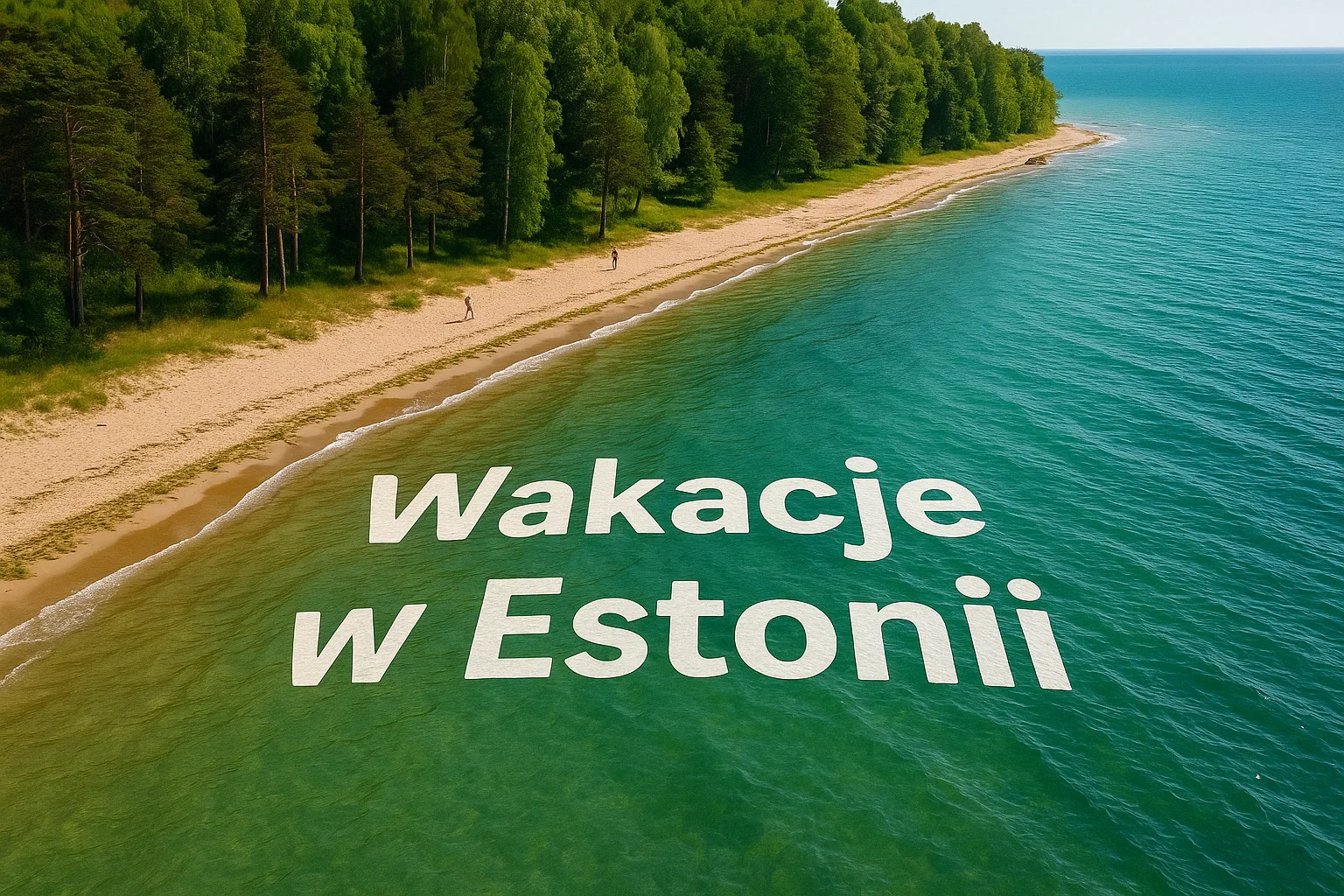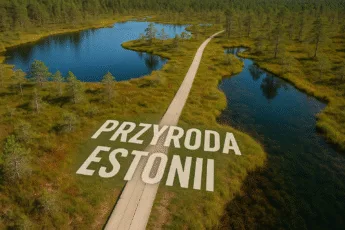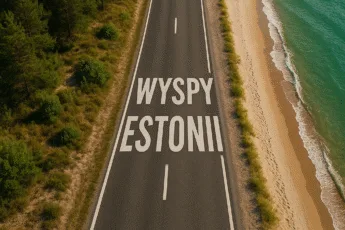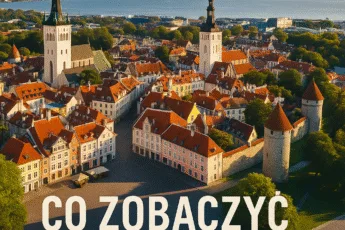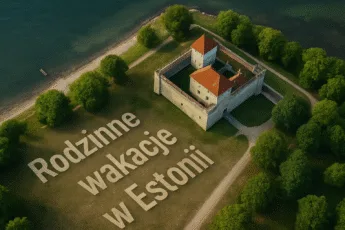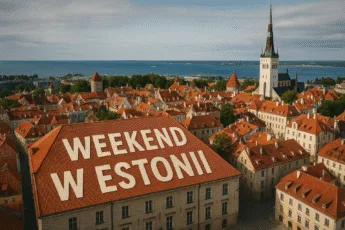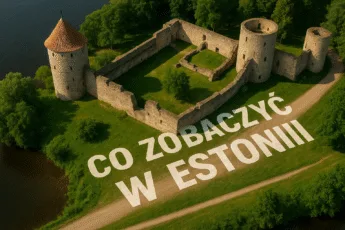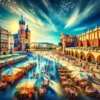Estonia in 2025 is one of the few places in Europe, where in the summer you can still relax without crowds and inflationary prices. A country with an area of 45,000 km² has over 2,000 islands, 3,700 km of shoreline and hundreds of lakes with water cleaner than in most EU bathing areas.
In one day you can swim in the ferry between the islands, eat breakfast in the atmospheric port and finish the day in the forest on the lake without coverage - everything within a 200 km radius. 99% of payments are non -cash. Prices? The average cost of stay with accommodation, meals and attractions is 60-70 euros per day .
This guide leads step by step through the most important decisions: where to go, what to see, how to get and how much it all costs. Each block contains numerical data, exact locations and specific tips - all based on current facts from 2025.
Where to spend a vacation in Estonia in 2025?
Estonia offers several clearly different holiday destinations. Seaside resorts are just one of the options - the island regions, lake zones and national parks inside the country are equally interesting. In 2025, the greatest tourist traffic is expected in four zones: the coast of the Bay of Riga, the islands of Sarema and Hiuma, southern Estonia around Lake Pejpus and the area of Põhja-Kõrvemaa.
The most popular coastal regions
The greatest interest among tourists is focused on the west coast - from Parnawa to Haapsal. In Parnawa itself, which has 40,000 inhabitants and is titled "Summer capital of Estonia", the season lasts from mid -June to the end of August. The average air temperature in July is 22 ° C, and the water temperature reaches 19 ° C.
Haapsal attracts a calmer audience - this is a place with a historic castle and a promenade of several kilometers. The popularity of coastal regions is confirmed by data from 2023: 61% of all short -term accommodation registered in Estonia concerned the town on the bay of Ryska.
- Parnawa: sandy beaches, city swimming pats, promenade, hotels 3-4 ★
- Haapsal: wooden architecture, spa climate, concerts in the summer
- Cables and Valgeranna: Small swimming pools surrounded by forests
More information and a detailed review of bathing beaches: Estonia beaches - where to the Baltic Sea?
Alternatives outside the coast
For people looking for silence and a cooler climate, South Estonia offers a diverse area with lakes, peat bogs and low hills. The area around Lake Pejpus (3555 km², one of the largest lakes of Europe) allows baths, cruises and rest in summer houses.
Another direction is Põhja-Kõrvemaa-a region covered by landscape protection, 60 km from Tallinn, with pedestrian and bicycle routes. Lack of commercial attractions here compensate for space, silence and great infrastructure for hiking.
| Region | Landscape type | Distance from Tallinn | The main advantages |
|---|---|---|---|
| Pejpus Lake | lake, beaches, fishing villages | 185 km | baths, peace, fishing |
| Põhja-kõrdemaa | forests, peat bogs, moraines | 60 km | hiking routes, wildlife |
Note: Estonia is not only beaches. Internal regions are less frequented, but offer much lower prices, greater privacy and access to wild nature without restrictions.
How much are the holidays in Estonia? Sample budget and prices 2025
Estonia remains one of the cheapest Baltic countries in terms of tourist costs. Prices in 2025 increased by an average of 4.2% compared to the previous year (data Eesti Statistikaamet, February 2025), but they are still lower than in Finland or Sweden and comparable to Lithuania. The budget of 60-70 euros per day allows for a comfortable stay without resignation from attractions.
Average prices of accommodation, food and transport
In the season (June 15 - August 20), the prices of accommodation in Tallinn and Parnawa are higher on average by 25-30% than out of season. The average price of accommodation in a 2-person room in a 3 ★ hotel in the capital is 75-90 euros per night, in the islands-55–65 euros. Cheap hostels and guesthouses start from 25 euros.
Food in a middle class restaurant: 10-15 euros for the main course, lunch set (päevapraad) - from 6.50 euros. Public transport in Tallinn costs 2 euros for a one -time ticket, but people with a guest card (Tallinn Card) have unlimited access.
- Overnight (Hotel 3 ★): 55–90 euros / night
- Breakfast / Cafe: 5-8 euros
- Local dinner: 6-12 euros
- Public transport ticket: 2 euros
- Bicycle rental: 8-12 euros / day
How to save on site?
The biggest savings are generated by an earlier reservation - 60 days before the date of arrival is an average of 18% lower accommodation prices. In the Islands and in the regions outside of Tallinn, it is worth using private houses (korter) reserved by local websites, e.g. majutus.ee. Estonia promotes public transport - regional communication is often free for residents and very cheap for tourists (e.g. Hiiumaa -Kärdl bus - 2 euros).
The tap water is suitable for drinking throughout the country. Free charging points for electric vehicles are available on the main roads (e.g. Tallinn -Tart, Tallinn -Narva). Many costs can be avoided using Tallinn Card or Pärnu Visitor Card, which offer admission to museums, free transport and discounts in restaurants.
| Category | City (Tallinn / Parnawa) | Island region (Sarema / Hiuma) |
|---|---|---|
| Accommodation (7 nights, hotel 3 ★) | 630 euros | 420 euros |
| Food (3 meals a day) | 189 euros | 154 euros |
| Local transport and attractions | 85 euros | 48 euros |
| Total / 7 days | 904 euros | EUR 622 |
Note: Estonia may be surprisingly cheap - out of season prices fall by up to 40%, and many attractions (e.g. national parks) are available free of charge throughout the year.
What to see in Estonia in the summer?
In the summer of 2025, Estonia offers a full spectrum of attractions: from cities with Gothic architecture and excellent infrastructure, through modern and multimedia museums, to wild swamps and viewpoints without tourist crowds. 68% of foreign tourists visiting Estonia between June and August declare that they combine sightseeing with rest in nature (Visit Estonia, December 2024).

The most interesting cities and cultural attractions
Tallinn is not only the old town inscribed on the UNESCO list. In 2025, there are over 60 museums and galleries here, including valued kumu (contemporary art) and interactive Avastustehas proto (center of inventions). In July, there will be Festival Jazzkaar (4–14.07) and Tallinna Merepäevad (19–21.07) - port festival with concerts and fairs.
Tartu is an academic city, in which the European Science and Innovation Center operates in 2025 (opening: May 2025). For tourists are also important: Vanemuine Theater, Estonia National Museum and the Observatory in Tõravere.
- Kumu, Tallinn: contemporary art, VR exhibitions, tickets: 12 €
- Proto, Tallinn: Science Center, interactive simulations, tickets: € 14
- Erm, Tartu: National Museum, tickets: 10 €, family: 22 €
What to do outside the trail?
For people looking for something more than classic tourist routes, Estonia has prepared dozens of microregion projects. In the Setomaa region (southeast of the country) you can visit wooden churches, local galleries in the summer and participate in traditional craft workshops.
In the north, attention is attracted by Pakri cliffs - a rocky shore up to 25 MZ on a pedestrian route and a viewpoint at the Pakri Tletorn lighthouse (open: 10: 00–20: 00, admission: 4 €). In the south - wild meeneniknno peat bogs with a wooden footbridge with a length of 2.5 km through the wetland and Lake Suurjärv.
Note: in Estonia, over 30% of the territory are protected areas. The trails are marked, well maintained and free. In many of them you will find camping points with free heating wood (RMK).
TOP 5 attractions with a view
- Suur Munamägi observation tower: the highest point of Estonia (318 m), panoramic elevator, price: 5 €
- Pakri cliffs: a 25-meter cliff with a view of the Baltic Sea and a nuclear power plant from the USSR
- Keila-Joa tower: Viewpoint on the waterfall (6 m), castle from the 19th century
- Lantern Kõpu (Hiiumaa): the oldest operating in the Baltic region, erected in 1531.
- Tartu Tower Tomemägi: Panorama of the city and the Valley of the Emajõgi River
You can find more places with a natural climate and a retail description of the regions in the article what to see in Estonia - city, nature, islands and relaxation .
Estonian islands - holidays in the rhythm of Slow
Estonia has over 2,200 islands, of which only 19 is constantly inhabited. In 2025, Sarema, Hiuma, Muhu, Vormsi and Kihnu have the greatest tourist significance. There are no queues, shopping centers or noise in the Islands - the season lasts here from mid -June to the end of August, and its peak falls for the last two weeks of July. This is a direction chosen by 17% of foreign tourists visiting Estonia (data EAS, January 2025).

Sarema and Hiuma - who are they perfect for?
Sarema is the largest island of Estonia (2,673 km², 33,000 inhabitants). The center is the town of Kuressaare - with the episcopal castle from the 13th century, a yacht port and developed accommodation infrastructure (over 130 facilities). The island is ideal for families, people 50+ and those who are looking for silence without giving up comfort. There are 8 SPA and wellness centers here, and the total number of beds in the season exceeds 4,000.
Hiuma is the second largest island (989 km², 8,500 inhabitants), less urbanized and more natural. The characteristic lanterns of Kõpu and Tahkun, wetlands, peat bogs and conifers make it a typical word - ideal for photographers, cyclists and people who value lonely beaches. The daily number of tourists does not exceed 1,000 people.
Smaller islands worth attention
Muhu is an island connecting Sameme with the continent-perfect for a 1-day bicycle trip. There is an open -air museum with original peasant buildings from the 18th and 18th centuries. Vormsi (93 km²) is the island of Estonian Swedes - with the preserved ethnic structure and local dialect. In the summer there is a ferry from Rohukül, and the number of inhabitants is growing from 400 to 1,500.
Kihnu (16.4 km², 700 inhabitants) was inscribed on the UNESCO list as an intangible heritage - women still wear traditional costumes here, and men fish with wooden boats. Communication takes place mainly with bicycles and tractors.
| Island | Access (from Tallinn) | The range of accommodation prices | Tourist profile |
|---|---|---|---|
| Sarema | 4.5 h (car + virtu ferry) | € 45–110 / night | families, wellness, active |
| Hiiuma | 4 h (car + ferry from Rohukül) | 35–80 € / night | Cyclists, photographers, naturalists |
| Muhu | 3.5 h (transit via Sareme) | 35–70 € / night | Slow Travel, local culture |
| Vormsi | 3.5 h (car + ferry) | 30–65 € / night | ethno, nature, bikes |
| Kihnu | 5 h (car + ferry from munalaiu) | € 40–75 / night | UNESCO, traditions, words |
Note: There is practically no public transport on the islands. 97% of visitors move by bike or car. The Elmo Rent electric car rental there is a rental of electric cars.
A detailed guide to each of the islands and their attractions can be found here: Holidays on the Estonian Islands (Sarema, Hiuma, etc.) .
Where to sleep in Estonia? Comparison of options
Estonia offers a diverse accommodation base, well developed even outside the largest cities. In 2025, there are over 3,100 certified tourist facilities, of which over 1,700 registered in the Eesti Majutettetevõtete Liit system. The greatest density of facilities falls on Tallinn, Parnawa, Sameme and regions of national parks.
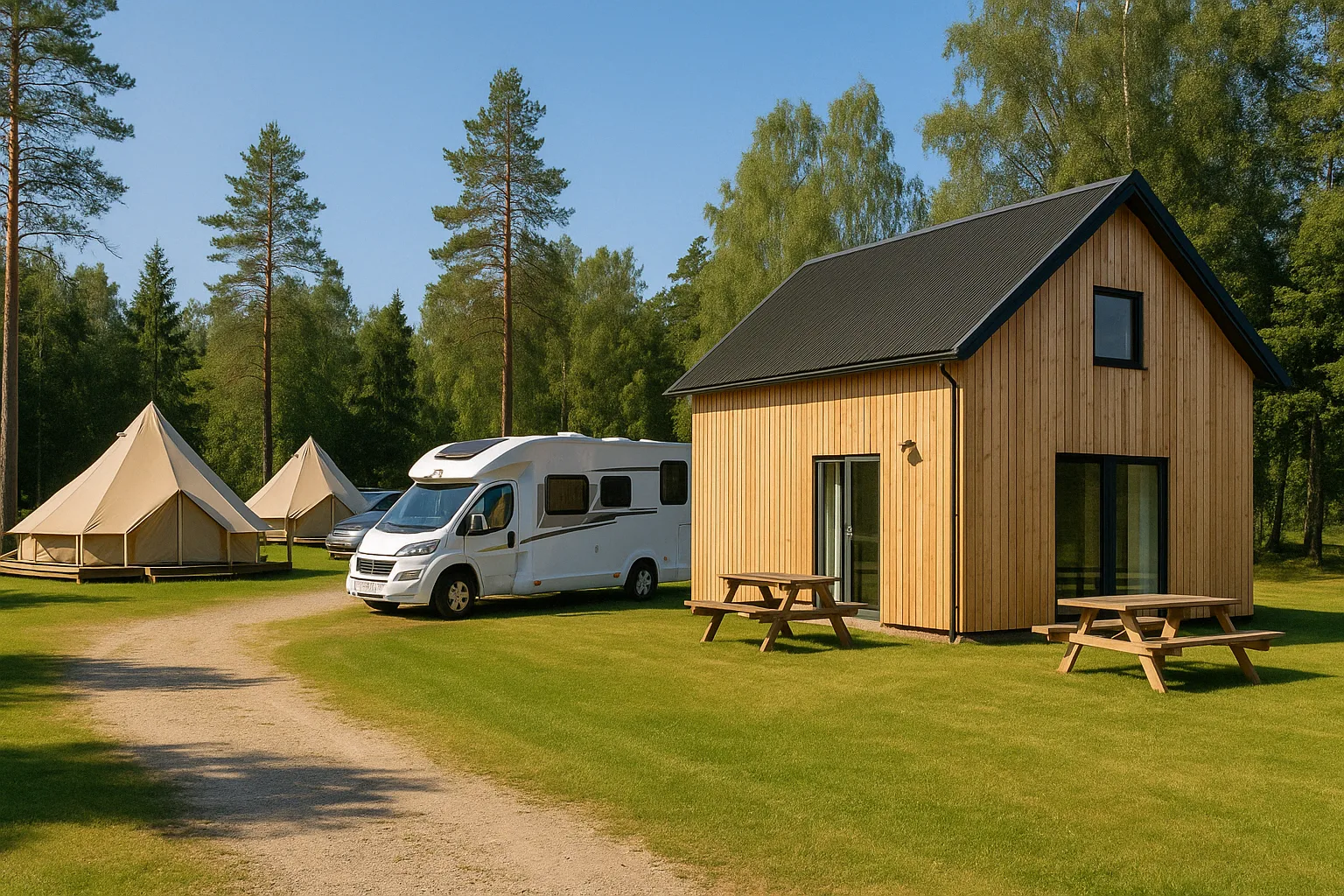
Hotels, guesthouses, apartments
Hotels 3 ★ and apartments dominate in large cities and islands. The standard is high: 92% of hotels have a private bathroom, access to Wi-Fi and free parking. The most popular booking platforms are booking, puhkaeestis.ee and Airbnb (although the latter loses popularity for local sites).
Pension and apartments are popular among families and couples - prices start from 30-40 € per night, and the average price in the summer season is € 62. In Kuressare (Sarema) in July 2025, over 85% of available apartments were reserved for a minimum of 2 nights until mid -June (Data.ee, May 2025).
- Hotel 3 ★: 60-100 € / night, often with breakfast
- Pension (2 people): 35–75 € / night
- Apartment with annex: 45–90 € / night, often without food
Camps, glamping and other atmospheric places
Estonia has 250+ official camping, of which more than half have direct access to the lake, sea or forest. Glamping is gaining popularity - in 2025 there are already 37 objects with spherical tents, barrels, stakes and containers with a view.
There are over 220 free camping zones with firewood, a place for a bonfire and a dry toilet. In 2024 a total of 354,000 people benefited from them, of which 42% were tourists from abroad.
- Private camping: 10–25 € / person / night
- Glamping: 55–90 € / night for a 2-person tent
- Free RMK camps: 0 € - unrestricted booking
| Type of accommodation | Average price (summer season) | Location | Online booking |
|---|---|---|---|
| Hotel 3 ★ | 80 € | Tallinn, Parnawa, Kuressaare | Yes |
| Apartment | 70 € | cities, islands | Yes |
| Guesthouse | 60 € | rural areas | partly |
| Private camping | 18 € | forest, coast, lakes | partly |
| Glamping | 75 € | nature, landscape parks | Yes |
| Free RMK camping | 0 € | whole country | NO |
Note: most nights in Estonia can be reserved online. puhkaeestis.ee are recommended in rural regions .
How to plan a trip to Estonia from Poland?
In 2025, Estonia remains one of the best connected Baltic countries. From Poland you can get there by car, bus, train (through Lithuania and Latvia) or by plane. A passport is not required for entry, and health insurance is recommended, but not compulsory.

By car, bus or plane?
Car: the route from Warsaw to Tallinn is 980 km through Lithuania and Latvia (on average 13-15 hours of driving). Best road: S8 → A5 (PL) → A1 (LT) → A1/A2 (LV) → Via Baltica to Estonia. No highway fees in Estonia, but sections paid in Poland and Lithuania. In 2025, the cost of both ways (gasoline + vignettes): approx. PLN 850–1,000.
Aircraft: direct flights from Warsaw and Krakow to Tallinn (PLL LOT, Ryanair). Flight time: 1 hour 45 min. Prices in the season: PLN 280-580 both ways. The Tallinn Lennart Meri airport is located 4 km from the city center and is connected to it by tram (line No. 4, ticket 2 €).
Bus: daily connections from Poland to Tallinn via Vilnius and Riga (Flixbus, Lux Express). Travel time from Warsaw: approx. 19 hours. Tickets: from 170 PLN one way (with a change). Comfortable buses with Wi-Fi, screens and sockets.
Documents, visa, insurance
Estonia belongs to the Schengen zone - no visa or border checks are required. The passport is not required , a valid ID card is enough. Children can travel with a passport or proof. Drivers only need Polish driving license - it is fully honored.
Health insurance is not compulsory, but recommended. The National Health Fund does not refund full treatment costs in the Baltic countries. The European Health Insurance Card (EHIC) is accepted, but only includes basic interventions. Tourist insurance with an extension with sports (e.g. bikes, kayaks) costs from 35 PLN per week.
Step by step: planning an independent journey
- 60-90 days before departure: choose a route, book accommodation and transport
- 30 days before: buy -out tourist insurance + check the validity of the documents
- 7 days before: Download offline maps (Tallinn, Sarema, RMK routes), confirm the reservations
- 1 day before: Pack documents, Powerbank, EHIC card and pilet.ee application (tickets)
Note: The passport is not needed - a valid ID card is enough. Estonia recognizes Polish documents without additional registration of stay for trips shorter than 90 days.
Estonian cuisine - what is worth eating in the summer?
Estonian cuisine combines Nordic, Slavic and German influences. In the summer of 2025, local restaurants focus on seasonality and fresh products: salted Baltic fish, berries, forest herbs, homemade cheese and vegetables from local crops. The cities are dominated by "New Estonian Cuisine" restaurants, while in the villages and islands - traditional cuisine, served without compromises.

Summer classics and regional flavors
Külmsupp is the most commonly served summer dish in Estonia - a cooler from kefir, cucumber, radish and dill. Marinated herring, smoked flounder (especially on the coast), and Kapsad mulgi - sauerkraut with barley and bacon, traditionally from the Mulgimaa region are also popular. In July and August, dumplings with blueberries and sea buckthorn jam are served.
Samem is dominated by fish kitchen, with eel -based soups and fried flounder. Flour dishes and baked goods are popular in southern Estonia - gingerbread from Võru and potato pancakes of Kartulosei . In Tart and Tallinn, it is easy to find modern interpretations of classics - e.g. Ceviche with cod with wild garlic flowers.
Where to eat well - restaurants and fairs
Tallinn: Noa Chef's Hall (1* Michelin, tasting 120–160 €), F-Hoone (local cuisine, 12-20 €), Balti Jaama Turg market-dozens of stands with regional food, open daily 9: 00–19: 00.
Parnawa: Villa Wides - a modern kitchen from local ingredients (15–25 €). In the summer, Pärnu Street Food Festival (July 12-14, 2025).
Kuresaare (Sarema): Hafen - fish and seafood (fresh flounder, 13 €), gosze Resto - local wellness kitchen.
Tartu: Hõlm (fine dining, 50 € for 3 dishes), vegetable market at ul. Kalevi 1 - open 6 days a week.
| Dish | Price (EUR) | Region | Where to try? |
|---|---|---|---|
| Külmsupp (cooler) | 4–6 | all Estonia | Municipal fair, home kitchens |
| Smoked flounder | 6–8 / portion | Coast, Sarema | port restaurants |
| Mulgi Kapsad | 6–10 | Mulgimaa | agritourism farms |
| Potato pancakes (Kartuści) | 2-3 / Art | South of Estonia | fair, bakeries |
| Blueberry dumplings with sea buckthorn | 4–7 | Central Estonia | Festivities and fairs |
Note: in Estonia there is no tip as an obligation - leaving 5-10% is welcome, but unexpected. In small premises you can often pay only by card.
You can find more about cuisine and traditional dishes here: what to eat in Estonia? Traditional dishes, regional flavors and kitchen .
The nature of Estonia in the summer - lakes, forests, parks
Estonia is one of the most forested European countries - forests occupy 50.3% of the state area (RMK data, 2024). There are 6 national parks, 131 nature reserves in the country and over 2,000 officially designated pedestrian and bicycle routes. All trails and campsites are free, kept by RMK and regularly updated in the laodusegacoos.ee .
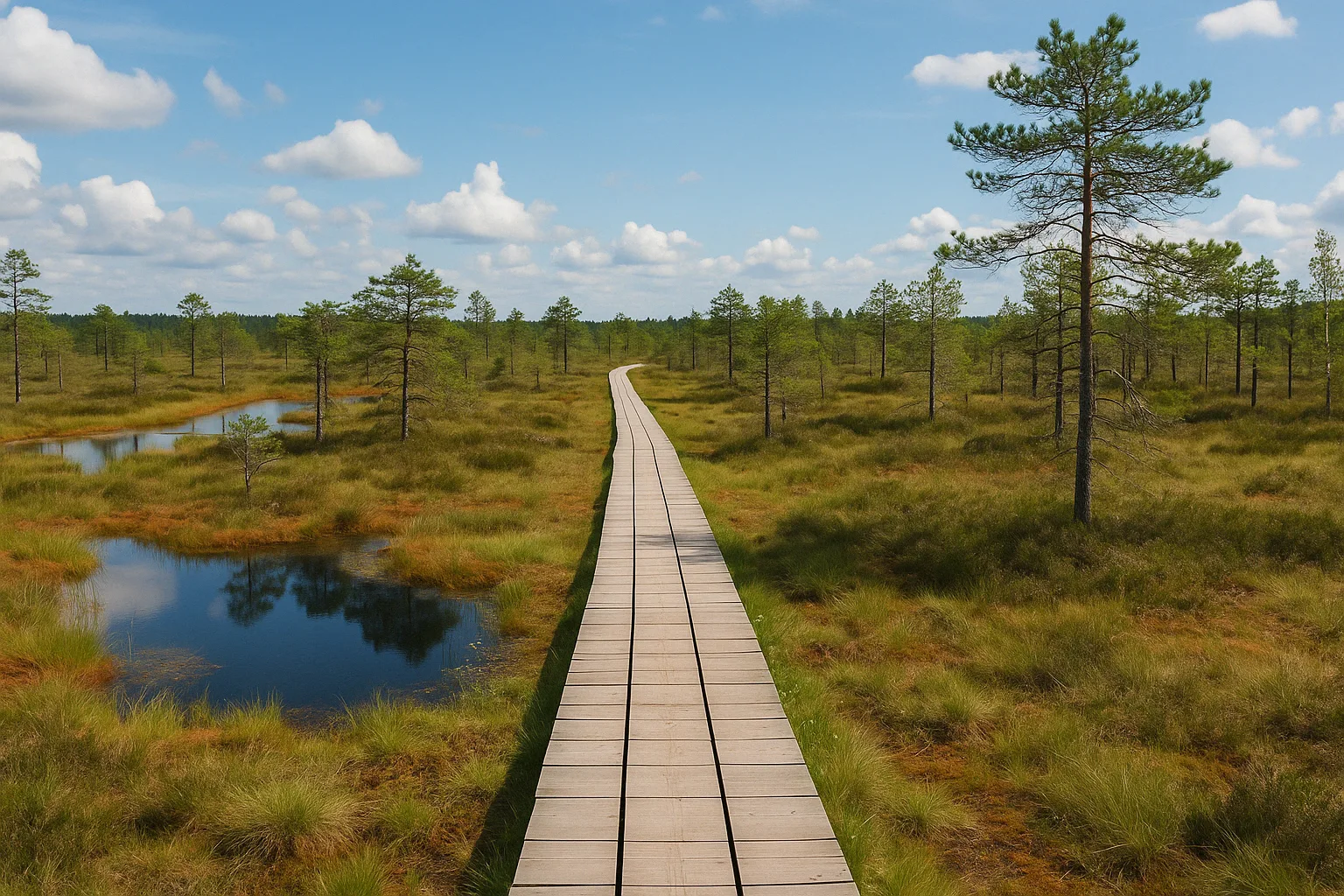
Active rest: walks, bikes, kayaks
In the summer of 2025, trails in the Sooma, Lahmaa and Matsal national parks are the most popular among tourists. The routes around the Võrtsjärv and Peipus lakes are also popular. Estonia also offers 3 large eurovelo bicycle routes and over 250 km of marked kayaking trails in calm waters - mainly along the Ahja, Halliste and Setomaa river.
- Bicycle: Rannarada route (Parnawy coast - Hädemeeste), 78 HP, 95% asphalt
- On foot: Meeneniknno peat bogs - 8.7 km loop, 100% wooden footbridges
- Kayak: Ahja River - episode Kiidjärve -Taevaskoja, 14 km, 3-4 h, easy level
Where to look for silence and contact with nature?
Lahmaa is the largest Estonia National Park (725 km²), located only 50 km east of Tallinn. In summer, it offers access to sandy bays, waterfalls (e.g. Jägala - 8 m high), and educational paths through marsh and pine forests. There are no chain hotels in the region - wooden houses and RMK shelters dominate.
Soomaa, in turn, is a park known from the so -called "Fifth season" - summer pouring of peat bogs. In July and August 2025, the water level will be moderate, ideal for kayaks and wandering. There are 5 marked routes with a length of 3-10 km in the park, with observation towers for birds and free camping shelters.
| Route | Length | Activity type | Location |
|---|---|---|---|
| Donor | 78 km | bicycle | South coast (Pärnu) |
| Meenic | 8.7 km | on foot | Setomaa / Võrumaa |
| Ahja Kiidjärve -Taevaskoja | 14 km | kayak | South of Estonia |
| Lahemaa Altja -Viru | 7.1 km | on foot | north-east Estonia |
| Soomaa riisa trail | 4.8 km | on foot | center of the country |
Note: All routes are free, do not require reservations and are also available out of season. The latest GPS maps are available in RMK and Loodusegacoos applications.
A detailed guide to parks and lakes can be found here: Estonian nature - lakes, forests and national parks .
Estonia with children - is it worth it for a family vacation?
Estonia in 2025 is one of the safest and most "predictable" family directions in North Europe. Infrastructure for children is developed systemically - over 85% of urban attractions and 60% of gastronomic premises have facilities for the youngest (data EAS Family Travel Report 2024). Estonia is also a country of low sanitary and transport risk, with well -organized medical assistance and high availability of English -speaking services.
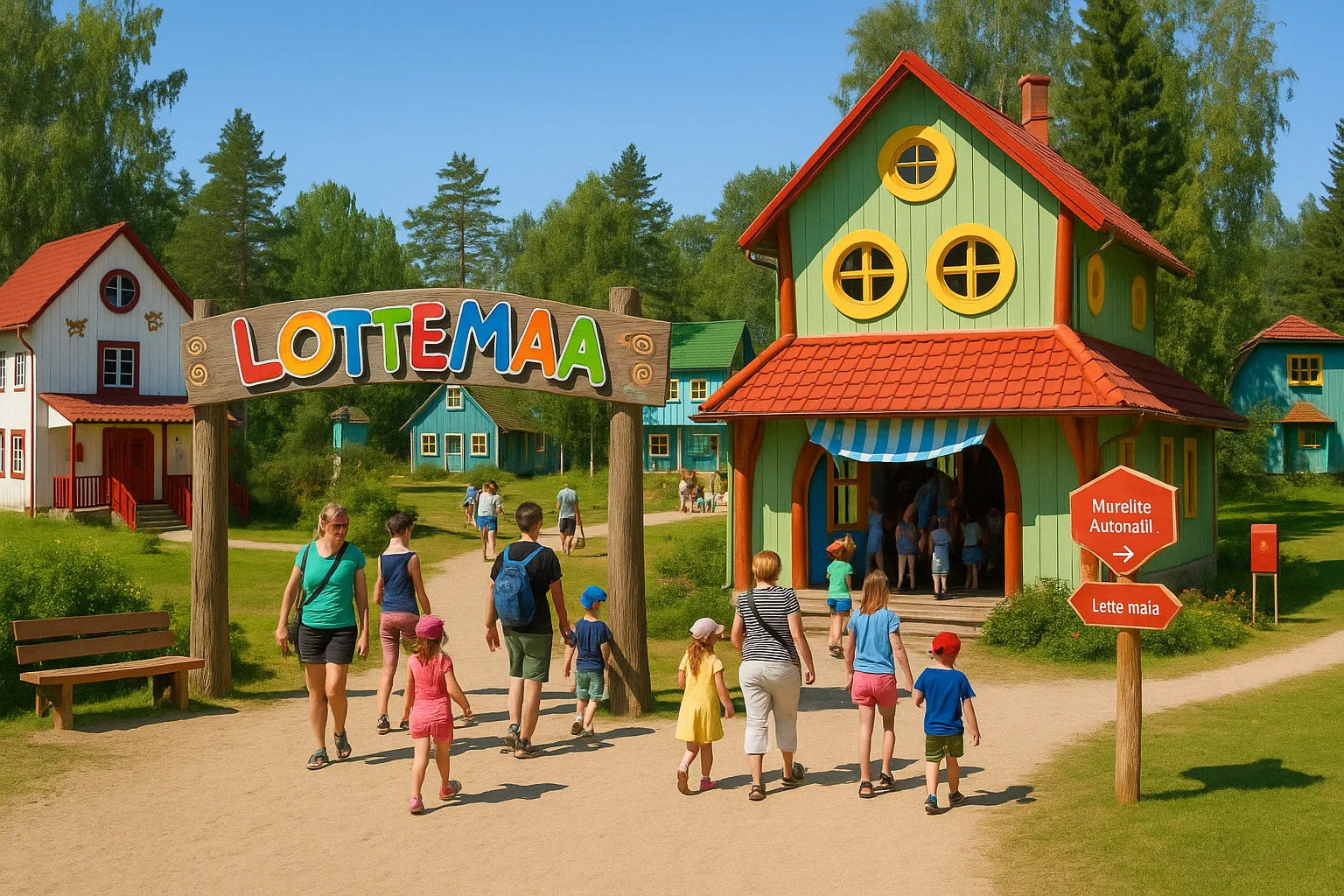
Children's friendly attractions
The largest interactive Avastustehas Proto (from 3 years of age), technology park with simulators and VR exhibitions operates in Tallinn. Nearby is Energy Discovery Center -interactive laboratories and mini-planetarium. For younger children, zoological gardens (Tallinna Loomaed, 400 species) and thematic parks are available, e.g. Lotttamaa near Parnawa - Lotta's fairy -tale park park with over 100 attractions and technical workshops (open: 15.06–25.08).
Water centers with recreation pools and slides are available in Kuresaare and Tartu, e.g. Aura Keskus (Tartu), open daily, family ticket from € 19.
Accommodation and food for families
Most guesthouses and hotels offer free stays for children under 6 years of age and discounts up to 50% for children aged 6-12. In restaurants, the children's menu is a standard, especially in large cities and in the Islands - a portion costs an average of 4-6 €, often with the addition of toys, coloring books or a corner with books.
Many agritourism owners provide children's bicycles, trailers and tourist cots with no fees. The regions most adapted to families are Sarema, southern Estonia (Võrumaa, Setomaa) and around Parnawa.
Top 7 places for families
- Lottemaa (Pärnu): thematic park with fairy tales characters, Science and Sport Zone
- Proto (Tallinn): Interactive Center of inventions, VR, physics, aviation
- Tallinna zoo: over 11,000 animals, Arctic pavilion, mini-zoo
- Aura Keskus (Tartu): recreational pools, slides, paddling pool with waves
- Muhu Farm Life: minizoo, animal feeding, horse riding lessons
- Forest House RMK Kiidjärve: Free Nature Workshops and Forest Education
- Farms in Võrumaa: ecological farms with local food and accommodation
Note: In Estonia, there are no additional recipes for children crossing the border with their parents. All you need is an ID card or passport, even temporary.
A detailed guide to attractions and family amenities can be found here: family holidays in Estonia - attractions for children and adults .
Tallinn in the summer - more than just the old town
The capital of Estonia in 2025 is not only medieval walls. The city offers modern infrastructure, combining history with technology and a logical transport network. According to data, Tallinn Strateegiakeskus, from June to August 2024, was visited by 1.43 million people - 81% of them spent less than 48 hours in the capital. That is why the effective planning of the day becomes key.
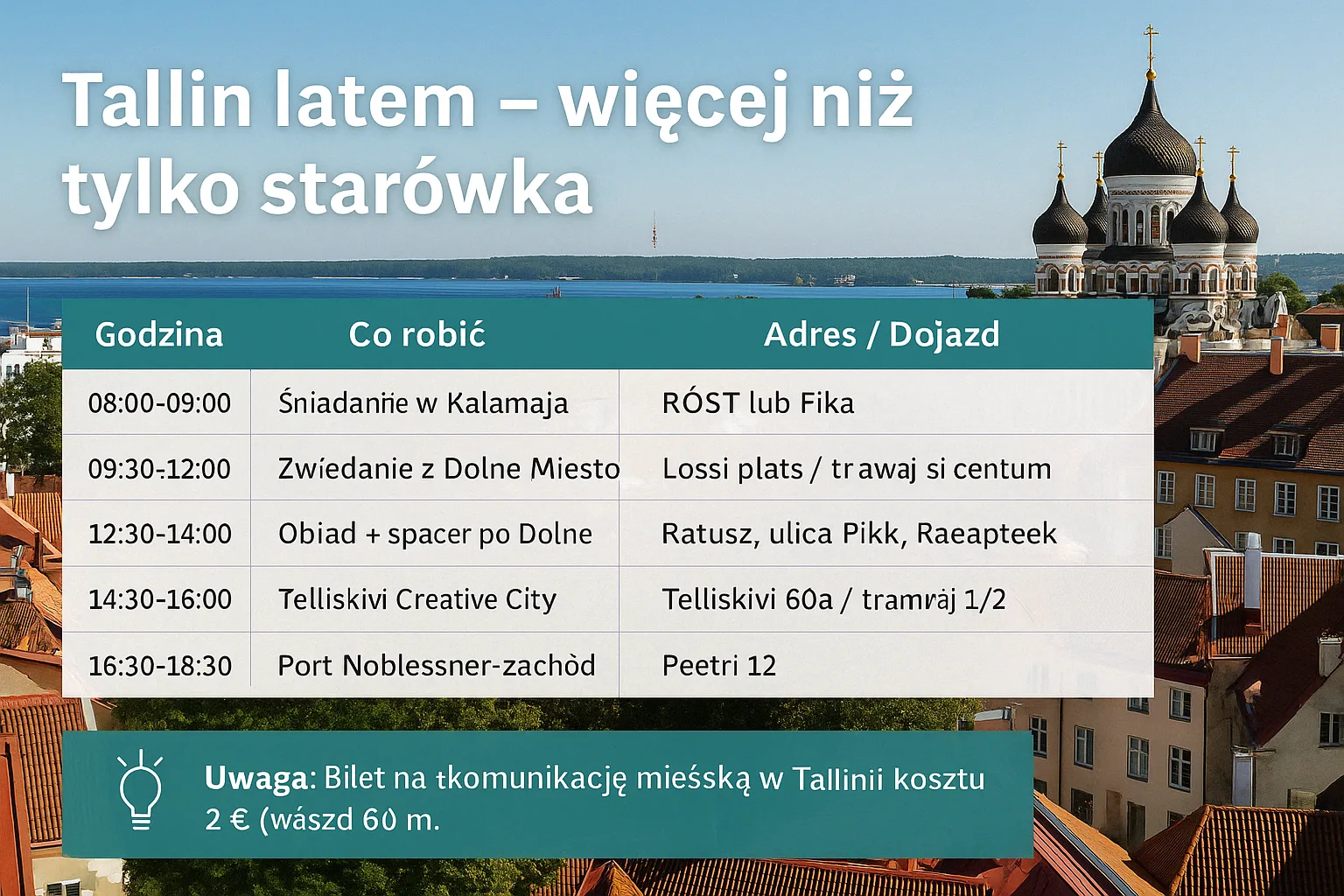
What is worth visiting in the capital?
(Parliament seat) castle is located the Council of Aleksander Nevsky (1894) and the best viewpoint - Kohtuutes . From there, you can go down the narrow streets to the Lower City, where the town hall, Rynek and Apteka Raeaptek (operating continuously from 1422).
In the afternoon it is worth visiting the Telliski Creative City - a post -industrial complex with galleries, bookstores, murals and a design market. Tallinn photographers - a modern photography museum with a viewing terrace and a restaurant are also here. Access from the center: Tram No. 1 or 2 (Telliskivi stop).
Where to rest and eat
For breakfast, premises in the Kalamaja district are recommended: Røst (fresh buns and coffee specialty) and FIKA (Scandinavian minimalism). At lunchtime, it is worth visiting Lendav Taldrik or Depoo Street Food - container gastro with dishes from Georgia, Thailand and Mexico.
In the evening: Noa Chef's Hall (1* Michelin, 120–160 €) or Lore Bistro (Port Noblessner) - view of the bay, local fish, excellent wines. For families-F-Hoone and Komette, both with terraces and a children's menu.
| Time | What to do | Address / access |
|---|---|---|
| 08:00–09:00 | Breakfast in Kalamaja (Røst or FIKA) | Telliskivi 60 / Tram 1, 2 |
| 09:30–12:00 | Visiting topea + viewpoints | ul. Lossi plats, on foot from the center |
| 12:30–14:00 | Dinner + walk in the lower city | Town Hall, Pikk Street, Raeaptek |
| 14:30–16:00 | Telliski Creative City + Photographers | Telliskivi 60a, tram 1/2 |
| 16:30–18:30 | Port noblelesser - sunset, dinner | Peetri 12, bus No. 73 |
Note: a ticket for public transport in Tallinn costs € 2 (valid 60 min). People from Tallinn Card can use transport, museums and unlimited attractions - daytime card: 34 €.
A detailed guide to the capital's most important places can be found here: what to see in Tallinn? .
Weekend in Estonia - how to use 2-3 days?
A short trip to Estonia is a real option not only from Warsaw, but also from Gdańsk, Poznań or Bialystok. In 2025 there are 9 direct air connections a week from Poland to Tallinn (PLL LOT, Ryanair), as well as fast bus connections (Flixbus, Lux Express) through Riga and Vilnius. The best results are given by air journey - arrival in the morning on Friday, departure in the evening on Sunday.
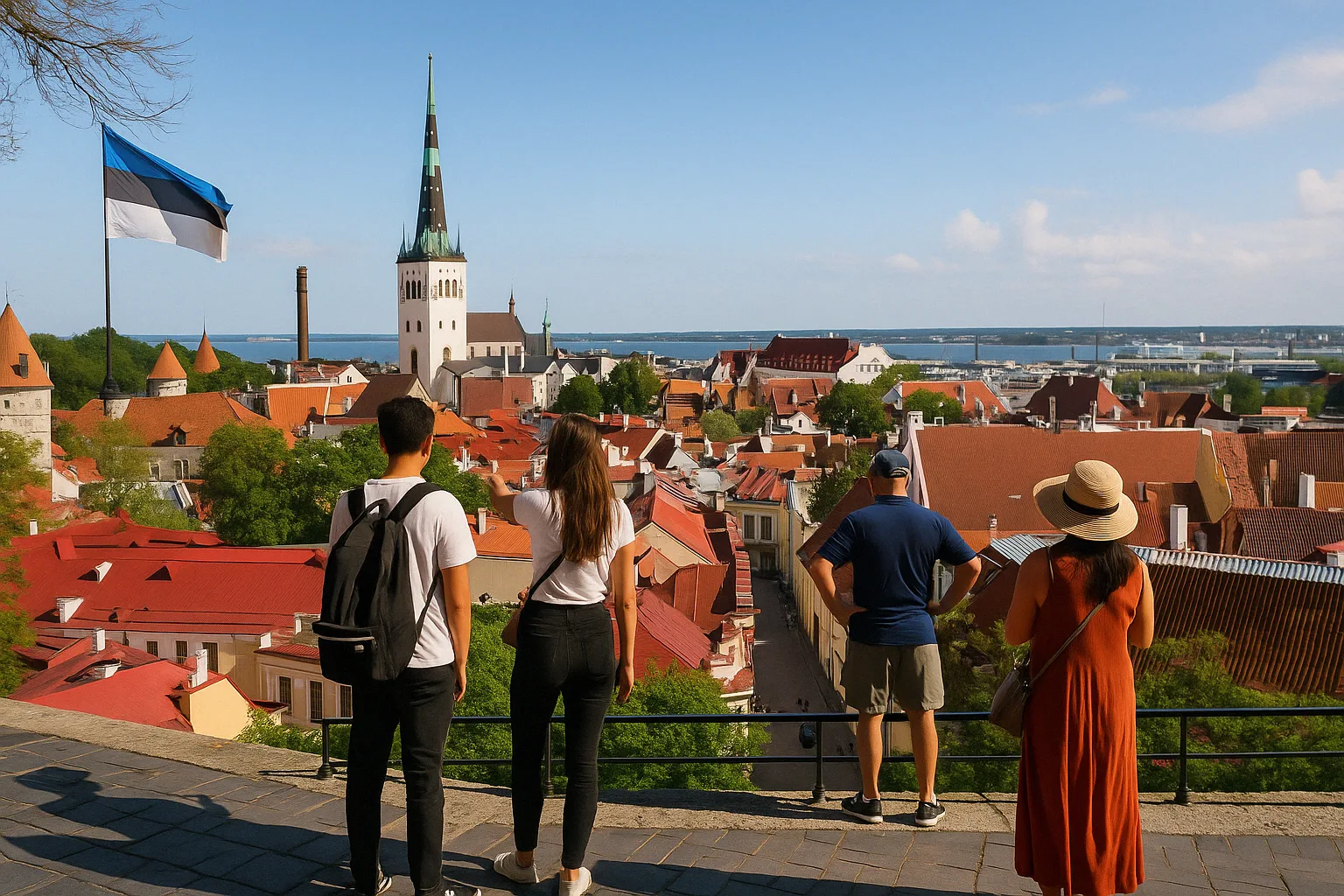
Ready plans for a quick trip
Variant 1: Tallinn + Coast - day first: old town and telliskivi; Day two: Cruise to Nissaar (ferry from Pirita, 40 min); Third day: Stroomi + beach + Kumu Museum. You will realize the whole without renting a car using public transport.
Variant 2: Tartu + Peipus - by train (2 Hz Tallina), day one: National Museum and the Tarto Center; Day two: a trip to Lake Peipus (Kallaste or Varnja); Day three: Return with a stop in Viljandi.
What to do when it rains?
Estonia has one of the highest densities of museums per capita in Europe (1 museum for 5,100 people). In Tallinn, closed attractions are recommended: the Proto Science Center, the Maritime Museum in Lennusadam (aviation hangars with submarines) or the interactive EnergiakeSkus Energy Center.
In Tartu it is worth visiting the Tõravere observatory (also open in the rain), the center of Ahhaa (learning + optical illusions), and for children - the largest aquapark aura in the country.
Mini-Plan for the weekend
- Friday: arrival in Tallinn, Old Town (Topea, Kohtuots), dinner in Kalamaja
- Saturday: full -day cruise or trip: Nissaar / Tartu / Sarema (early ferry)
- Sunday: Museum (photographers or Lennusadam), walking and return flight in the evening
Note: If you only have 48 hours - limit yourself to Tallinn. The city has over 20 attractions available on foot within 2 km, and transport from the airport to the center takes 15 minutes.
You can find more routes, tips and schedules here: Weekend in Estonia - a quick trip from Poland .
Castles and palaces in Estonia - history in a holiday climate
Estonia has over 180 historical residences, of which 41 are fortified castles, and 62 - classic palaces. Most of them were erected in the 13th and 18th centuries by the Order of Sword Knights, the Livonian nobility and German merchant families. In 2025, 23 facilities offer permanent museum exhibitions, and 9 operate as historical hotels. In the summer, castles organize concerts, picnics and outdoor performances - without mass crowds known from Western European castles.
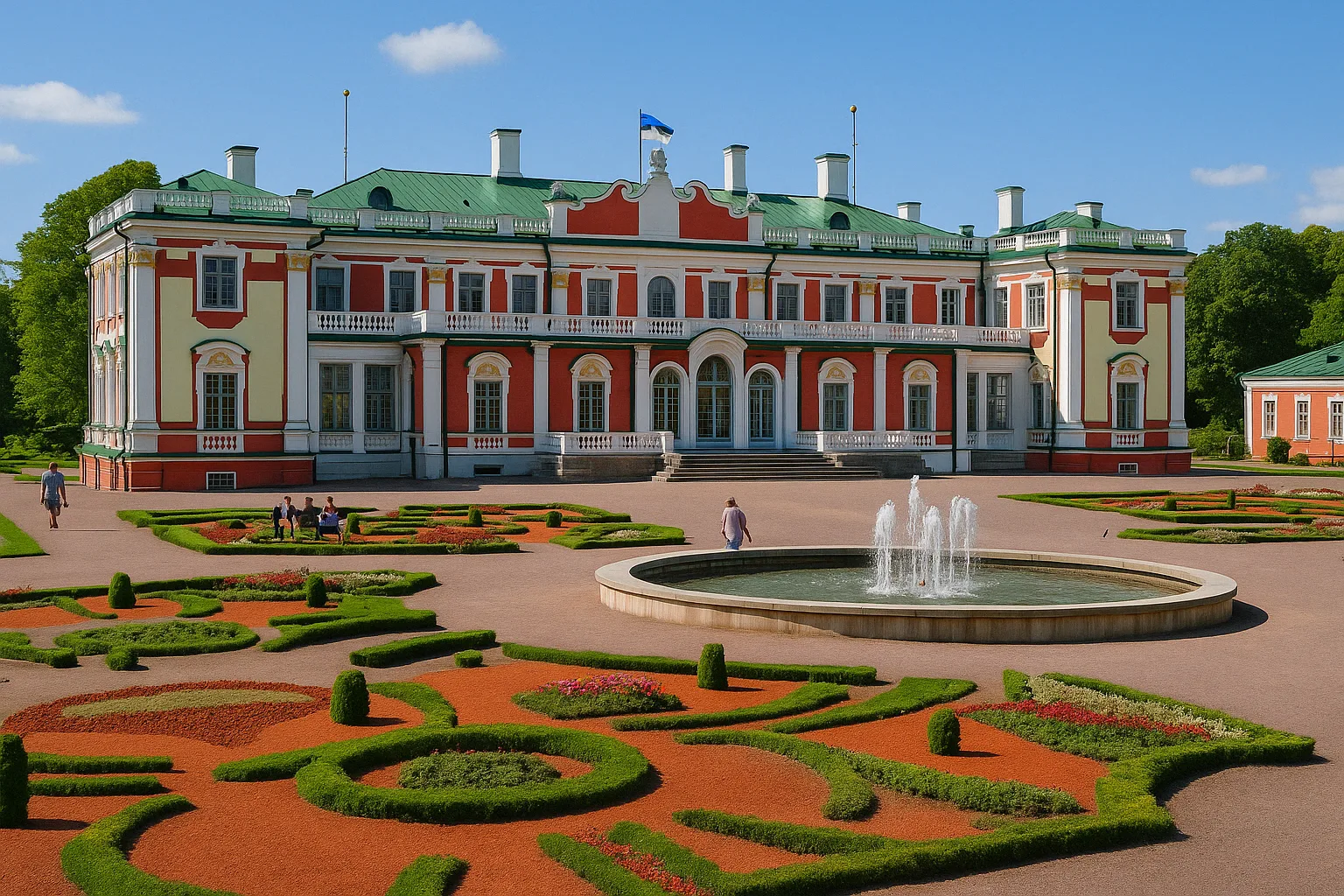
The most beautiful buildings with a soul
Castle in Kuressare (Sarema) - the only medieval castle in the Baltic countries preserved in the original shape. In July, there are concerts of old music and craft fairs. The castle has a courtyard, archaeological exhibition and an observation tower (40 m).
Kadriorg Palace in Tallinn - a baroque residence built by Piotr and for Katarzyna and in 1718. Currently, it houses the Museum of Foreign Arts. Surrounded by a park with fountains, in the summer he organizes outdoor exhibitions and piano concerts in the conservatory.
Rakvere Castle - an interactive complex with reconstructions of medieval rooms, dungeons and workshops. Children can try armor here, shoot a crossbow and visit an alchemical laboratory. Family admission: 28 €.
Where is it worth staying longer?
Vihula Manor Palace - a luxurious hotel complex from the 16th century (90 km from Tallinn). It offers 4-star accommodation, SPA, Slow-Food restaurant and own brewery. Around: pond, water grinder, bicycle routes. Price per night (2 people) - from 120 €.
ALATSKIVI - a neo -Gothic castle inspired by the Scottish Balmoral, built in 1885 by Baron Arveda von Nolcken. Currently: museum and boutique hotel with 6 rooms (accommodation from 85 €). Surroundings: Lake Peipus, pine forest, literary path dedicated to Jaan Tõnisson.
| Object | Location | Opening hours (season) | Tickets (€) |
|---|---|---|---|
| Kuressaare Castle | Sarema | 10: 00-18: 00 (daily) | 12 € / 20 € (family) |
| Kadriorg Palace | Tallinn | 11: 00-18: 00 (Tue - NDZ.) | € 9 /18 € (family) |
| Rakvere Castle | Rakvere | 10: 00–19: 00 (daily) | € 15 /28 € (family) |
| Vihula Palace | Lahmaa | 24/7 (hotel) | Overnight from 120 € |
| ALATSKIVI CASTER | Peipus | 10: 00–17: 00 (Tue - ND.) | € 6 /12 € (family) |
Note: Most Estonian castles work seasonally - between May 1 and September 30. Family tickets are available in almost every facility and often contain a free guide or field game for children.
You can find more about the history and architecture of the residence here: the most beautiful castles and palaces in Estonia .
Estonia on your own - tips for independent travelers
Estonia in 2025 is one of the most "digital" countries in Europe - and ideal for traveling without an office, group or guide. According to Eesti Pank data, 99.1% of payment is electronically made, and Estonia was the first in the EU to introduce full e-administration as early as 2002. For travelers, this means less barriers and more freedom.
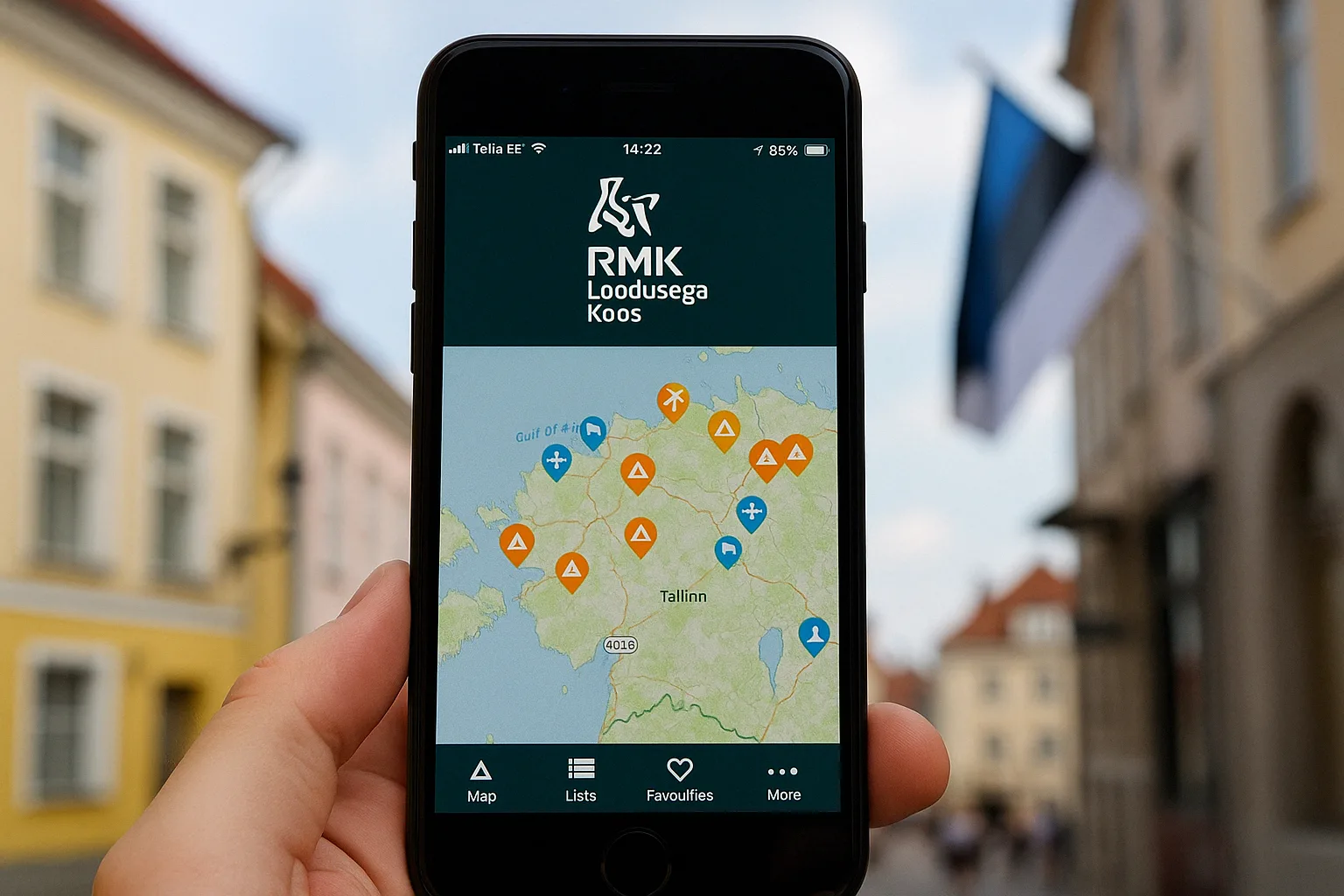
Car rental and local transport
Traveling around Estonia by car does not cause problems. The road network is dense (57,000 km, of which 16% asphalt), and traffic outside of Tallinn and Parnava - low. In 2025, rental prices start from € 32 per day (class A, basic insurance), e.g. in Citybee, Bolt Drive and Hertz Tallinn Airport.
National buses are the cheapest means of public transport - they connect most cities and villages. Examples of prices: Tallinn -Tart (2 h 20 min) - from 7 €, Tallinn - Kuressaare (with ferry) - from 12 €. Tickets are bought via the pilet.ee application or from the card driver. Trains are supported by Elron-clean, punctual, with Wi-Fi and sockets in each wagon.
- Domestic buses: Lux Express, Gobus, Sebe - comfortable, air -conditioned
- Elron trains: Tallinn -Narva: 3 h 10 min, ticket: 10 €
- Bicycle rental: from 10 € a day, e.g. Tuul, Citybike
Practical advice: applications, payments, language
Estonia works almost fully digitally - in cities you can pay by card even for parking, coffee from a machine and a toilet ticket. In small villages it is worth having a supply of € 10-20 cash, but this is not necessary. The banking system is based on SEPA - there are no fees for transfers or payments from the EUR account.
The most important phone applications:
- Pilet.ee: tickets for buses and trains
- RMK Loodusega Koos: Map of trails, camping, viewing towers
- Tuul: bicycle rental and scooter
- Citybee / Bolt Drive: Renting cars for minutes and days
- WAZE: The best updated navigation in Estonia
Estonian language differs from Finnish and does not resemble any Slavic language. In tourism and cities, English applies - 88% of people under 40. It uses it smoothly. In rural regions you can communicate in Russian, but this should not be expected automatically.
Note: Cash is almost unnecessary - Estonia is a country where you can pay even 1 € for coffee in the forest. Banknotes are mainly used by tourists and seniors.
What is worth knowing before the holidays in Estonia?
Although Estonia is not a large country, climatic and tourist conditions may vary depending on the region and time of day. Summer 2025 promises to be one of the warmer recent years - Estonian Weather Service forecasts (March 2025) speak of average July temperatures of 22–24 ° C, with 6-8 rainy days a month.
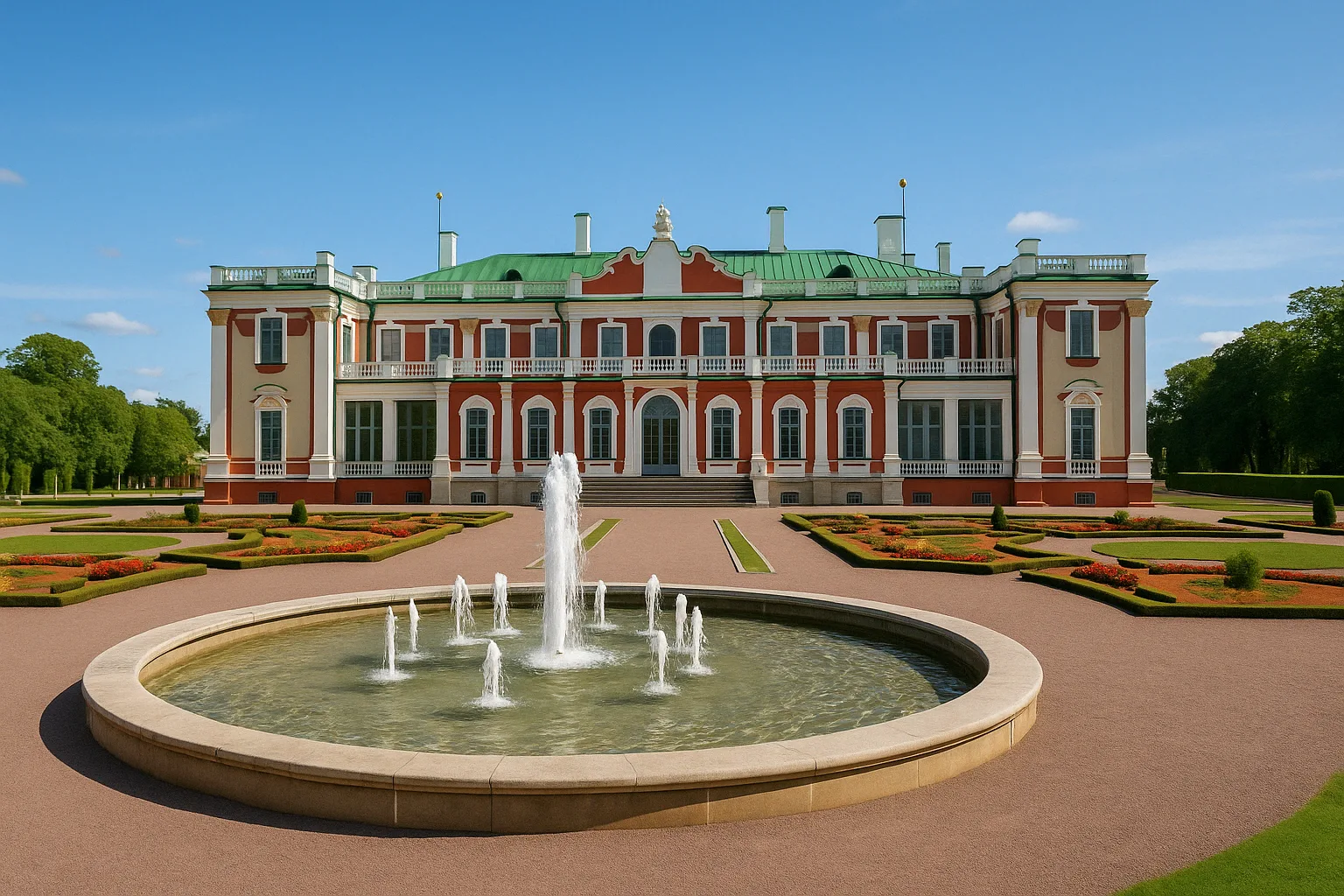
Weather, climate, length of the day
In June, the day lasts from 17 to 18 hours - the sun in Tallinn rises around 4:00 and sets after 22:00. In July, the day is shortened to about 16.5 hours. Nights are clear, especially in the northern part of the country. Average temperatures at night: 13-16 ° C.
The warmest regions are southern Estonia (Võru, Peipus) and the West Islands (Sarema, Hiuma). The coastal locations are windy - wind speeds reach 20-30 km/h in the summer, especially on the open beaches of the Baltic. Air humidity: 70-85%.
Safety, health, contact with local
Estonia is a safe country - a crime indicator according to Eurostat 2024: 23.1 / 100,000 inhabitants (for comparison Poland: 39.2). The emergency medical system works efficiently - emergency number: 112. Public hospitals and outpatient clinics are available in every capital of the poviat, in cities over 5,000 inhabitants - also private clinics.
There are no dangerous tropical diseases here, but it is recommended to protect against ticks and mosquitoes - especially in lake regions and peat bogs (Soomaa, Peipus, Võrumaa). Repents are available in every pharmacy and at gas stations. Mosquitoes appear in the evening and are active until the end of August.
Estonians are polite but distant. English understands 88% of young city residents, but in rural regions it is better to know a few phrases in Estonian or Russian. Small Talk is not a cultural norm - communication is material and direct.
| Topic | Facts / numbers | Tip |
|---|---|---|
| Weather | 22–24 ° C (day), 13-16 ° C (night) | Take Softshell + raincoat |
| Day | up to 18 hours of daylight | The eyes for sleeping will be useful |
| Communication | English 88%, Russian 34% | Download the Offline Translator Application |
| Security | Alarm number 112, low threat level | You don't have to have cash or wallet |
| Health | pharmacies in every city, EHIC works | Take a spray for ticks and mosquitoes |
Note: Mosquitoes in Estonia appear mainly in the evening and only near standing waters. In cities and on the beaches, their number is negligible - but when planning accommodation at the lake, take an effective repellent with deet or icaridine.
Ready plan of a 7-day vacation in Estonia
For travelers who want to see as much as possible during the week, Estonia offers compact routes with good logistics. Within 7 days you can visit the capital, islands, national parks and eat dinner with a view of the Baltic. The plan is based on real road and ferry connections, verified for summer 2025.
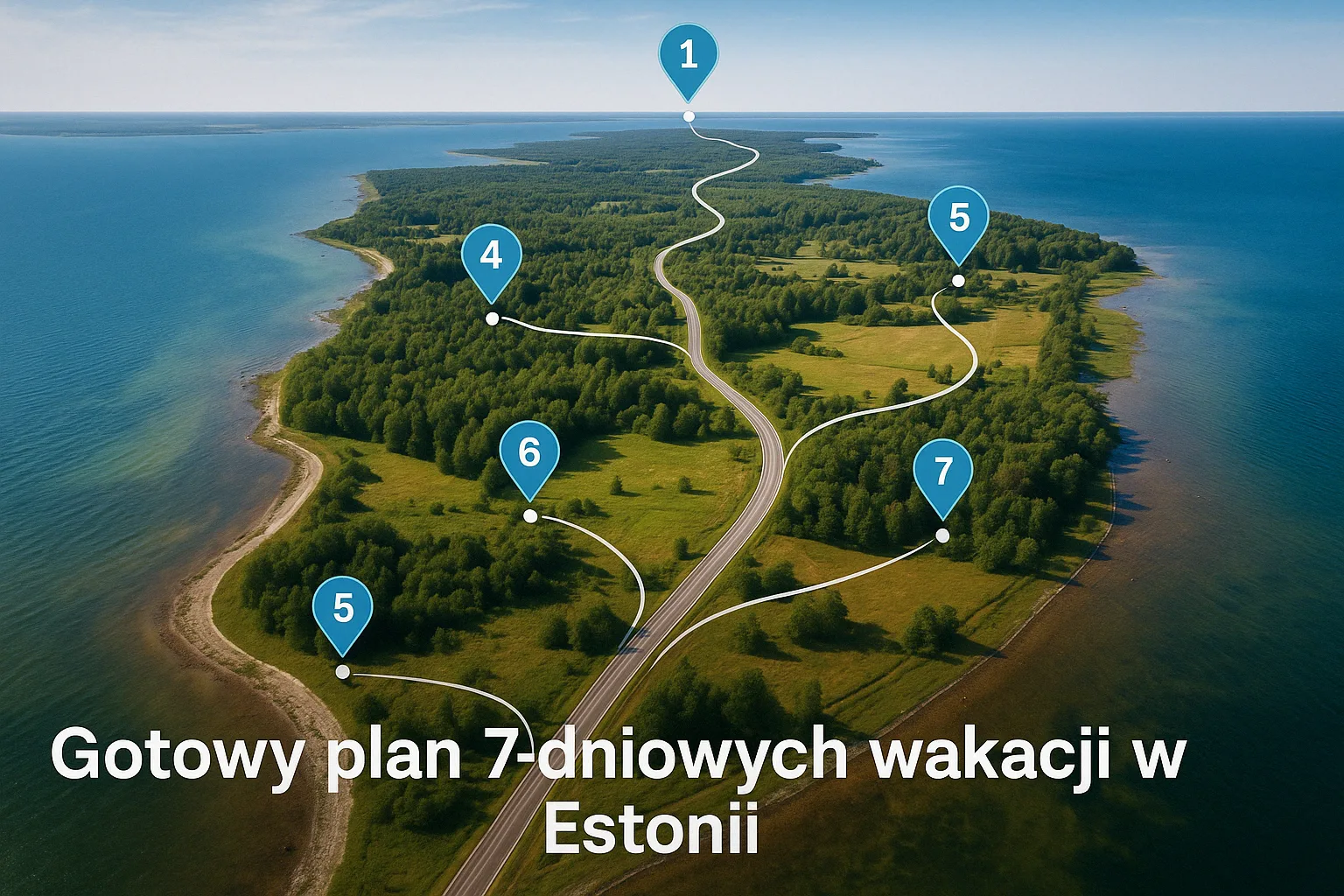
Day after day: Plan + Alternatives
- Day 1 (Sunday): arrival in Tallinn, visiting the old town, accommodation in Kalamaja
- Day 2: Tallinn - Telliskivi district, Kumu Museum, Stroomi beach or Nissaar cruise
- Day 3: Departure to Sameme (through Virtu and Muhu), an evening walk around Kuressare
- Day 4: Island Sarema - Lighthouse Kõpu, Panga cliffs, Järve swimming pool, accommodation
- Day 5: Return to the continent, travel to Tartu (3.5-4 hours), evening sightseeing of the center
- Day 6: Tartu - National Museum, EMAJõGI or Aura Keskus swimming pool
- Day 7 (Saturday): Transfer to Tallinn (train / bus), return to Poland
Alternatives: instead of the Sarema island - a weekend in Parnawa and Matsal, instead of Tartu - Lahmaa and Vihula Manor with accommodation in the palace.
Adapt the route to your interests
The route can be freely modified - Estonia is small but varied. Kuressaare and Tartu are recommended for families with children (indoor/outdoor attractions). For architectural lovers - Tallinn and Alatskivi. For the active - Lahmaa, Sooma and Lake Peipus with kayak rentals.
The prepared version of the plan is available in PDF format (for printing) and as an editable map in Google Maps. Coordinates of routes, opening hours of facilities and recommended restaurants were added.
Note: Download the finished plan in PDF or copy the route to Google Maps - the mobile version contains Poi points, pedestrian routes and parking spaces.
FAQ: Estonia in a nutshell - quick answers to the most common questions
Estonia in 2025 is a direction for those who are looking for authenticity, peace and a well -organized travel space. You don't have to know the language, have a great budget or special experience - a few days off and readiness for something more than a guide minimum.
It is a country that does not impose pace, does not scream with advertising and does not pretend to be something that it is not. Estonia does not promise "paradise on earth" - but it can surprise with silence, space and detail.
And that's why it is worth discovering it - on your own conditions.
